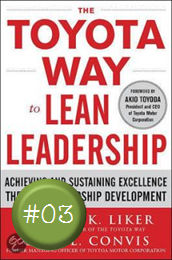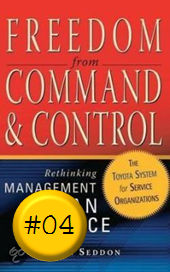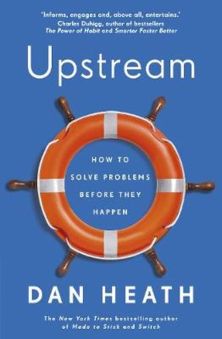In zijn biografie Jack - straight from the gut beschrijft Jack Welch hoe het in 1995 binnen GE begon met Six Sigma.
![]()
"Go give them everything you've got on Six Sigma."
I sensed we might be at an important moment. .... We ... felt that the earlier quality programs were too heavy on slogans and light on results.
In the early 1990s, we flirted with a Deming program in our aircraft engine business. I didn't buy it as a companywide initiative because I thought it was too theoretical.
The rumblings within GE were unmistakable. In our April 1995 employee survey, quality emerged as a concern of many employees. The "New Larry"[Larry Bossidy, BS] had become fervent about Six Sigma. He said for most companies the average was 35,000 defects per million operations. Getting to a Six Sigma quality level means that you have fewer than 3.4 defects per million operations in manufacturing or service process.
That's 99.99966 percent of perfection.
(...)
I came back to work and concluded: Larry really loved Six Sigma, the team thought it was right, and I had the survey, which said quality was a problem at GE.
Once everything came together, I went nuts about Six Sigma and launched it.
(...)
We ... brought in Mike Harry, a former Motorola manager who was running the Six Sigma Academy in Scottsdale, Arizona. If there is a Six Sigma zealot, Harry's the guy. We invited him to our annual officers meeting in Crotonville in October. I canceled our usual golf outing - a symbolic gesture if there ever was one - so that 170 of us could listen to Harry talk about his program.
(...)
... Harry's presentation succeeded in capturing our imagination. He had given us enough practical examples to show there was something to this. Most left the session that day somewhat frustrated with our lack of statistical comprehension but excited about the program's possibilities. The discipline from the approach was particularly appealing to the engineers in the room.
I sensed it was a lot more than statistics for engineers, but I didn't have any idea just how much it would become. The big myth is that Six Sigma is about quality control and statistics. It is that - but it's a helluva lot more. Ultimately, it drives leadership to be better by providing tools to think through tough issues. At Six Sigma's core is an idea that can turn a company inside out, focusing the organization outward on the customer.
(...)
We went form 3,000 Six Sigma projects in 1996 to 6,000 in 1997, whe we achieved $320 million in productivity gains and profits, more than double our original goal of $150 million. The benefits were showing up in our financial results. By 1998, we had generated $750 million in Six Sigma savings over and above our investment and would get $1.5 billion in savings the next year.
Our operating margins went from 14.8 percent in 1996 to 18.9 percent in 2000. Six Sigma was working.
We liked the results, but too often we were hearing that our customers weren't feeling the difference in quality.
It took a trip to Spain to find the solution. .... [Piet van Abeelen and I] were having lunch on the back porch of a hacienda on our Cartagena site. I asked Piet if he would be interested in coming to Fairfield to take a new staff job.... Fortunately, he signed on.
It was Piet who came up with the answer to why oru customers weren't feeling our Six Sigma improveements. Piet's reason was simple: He got all of us to understand that Six Sigma was about one thing - variation! We had all studied it, including me, in the class with the paper airplanes. But we never saw it the way Piet laid it out. He made the connection between averages and variation. It was a breakthrough.
We got away from averages and focussed on variation by thightening what we call 'span'. We wanted the customer to get what they wanted when they wanted it. Span measures the variance, from the exact date the customer wants the product, either days early or days late. Getting span to zero means the customers always get the products when they ask for them.
Internally, our problem was that we were measuring improvement based on an average - a figure calculated only our manufacturing or service cycle without regard to the customer. If we reduced product delivery times from an average of 16 days to 8 days, for example, we saw it as a 50 percent improvement.
Foolishly, we were celebrating.
Our customers, however, felt nothing - except variance and unpredictability. Some customers got their orders 9 days late, while others got them 6 days early. We used Six Sigma and a customer-oriented perspective involving span to guide us. That reduced the delivery span from 15 days to 2. Now customers really felt the improvement because orders arrived closer to their want dates.
Sounds simple - and it was - once we got it.
We were three years into Six Sigma before we "got" it. Span reduction was easy for everyone to understand and became a rallying cry at every level of the organization. It was just what we needed to take the complexity out of Six Sigma.
Bron: Jack - straight from the gut, Jack Welch with John A. Byrne





















